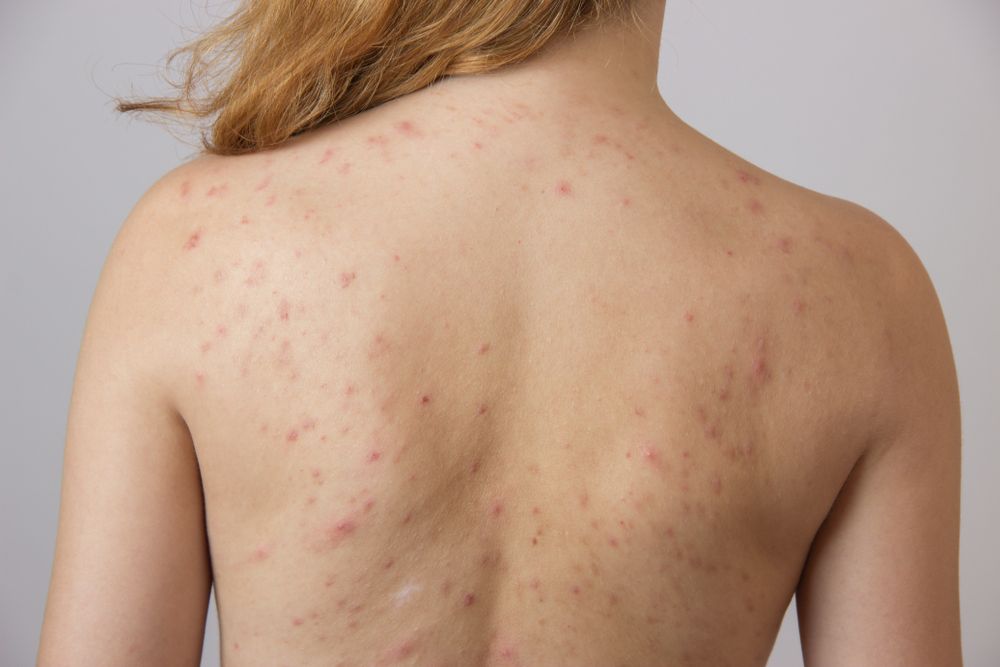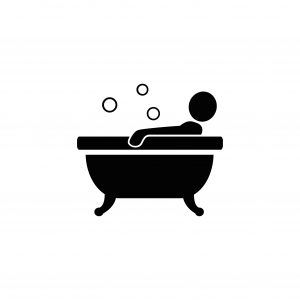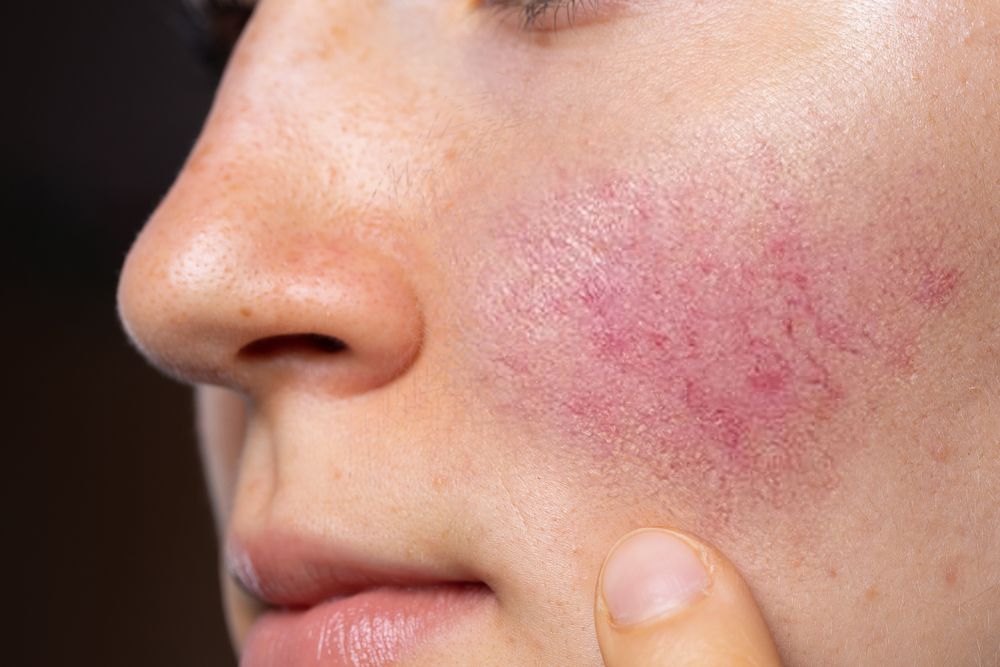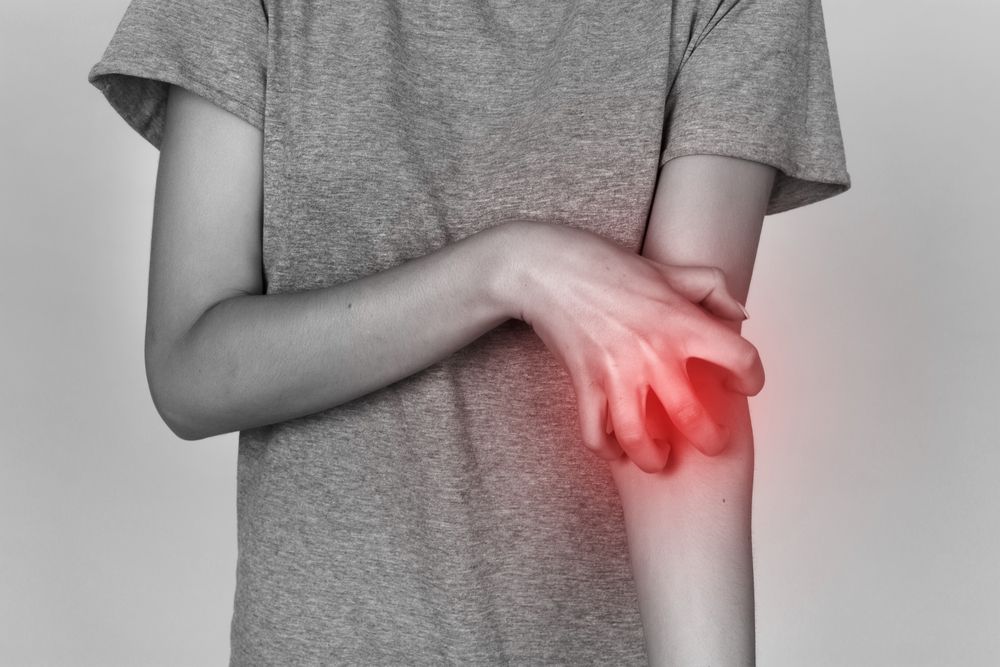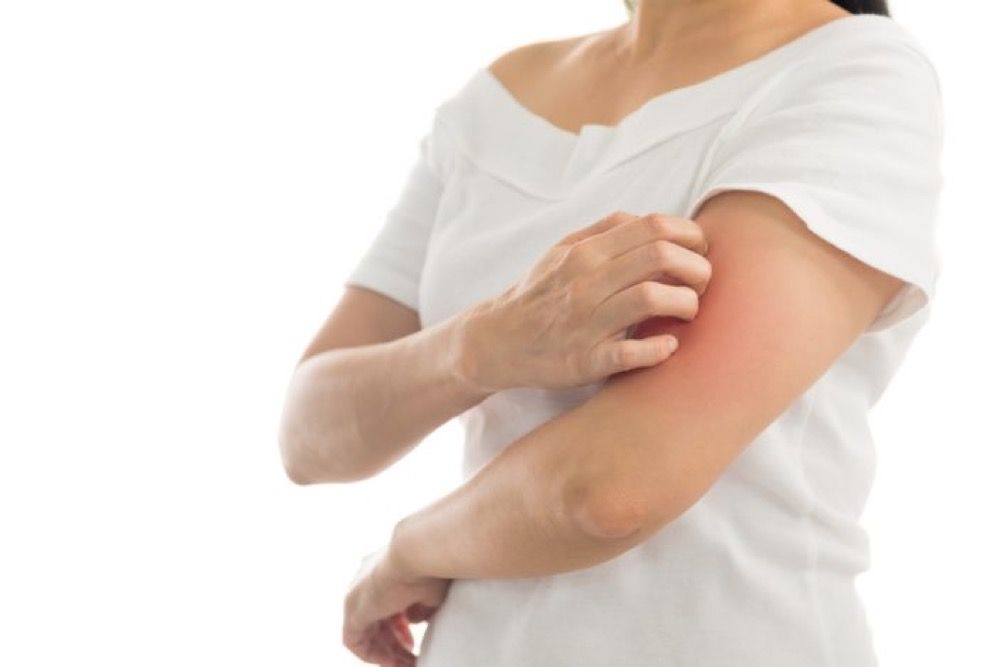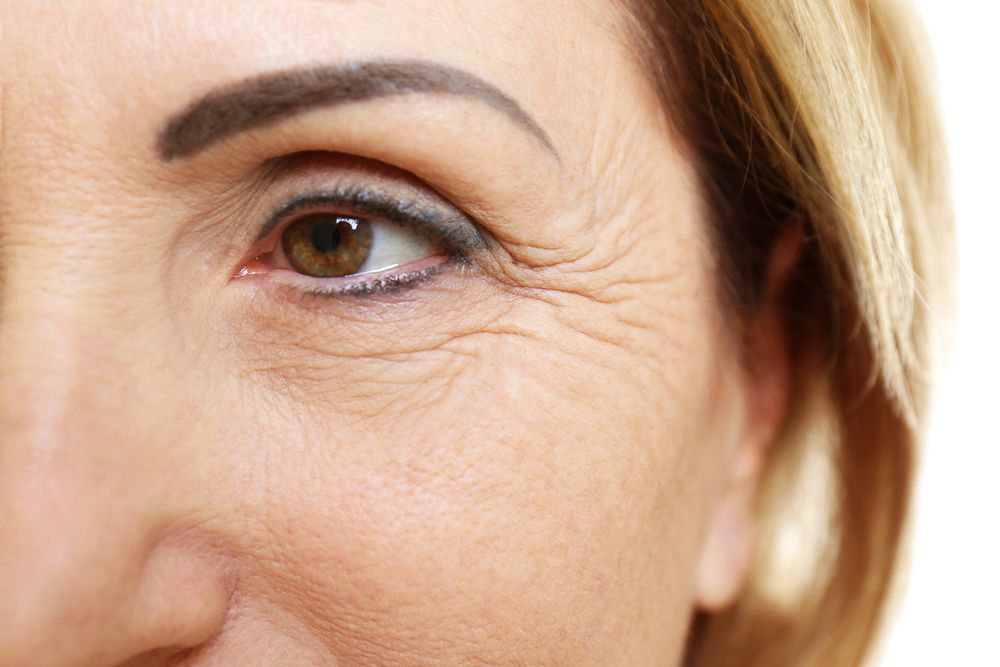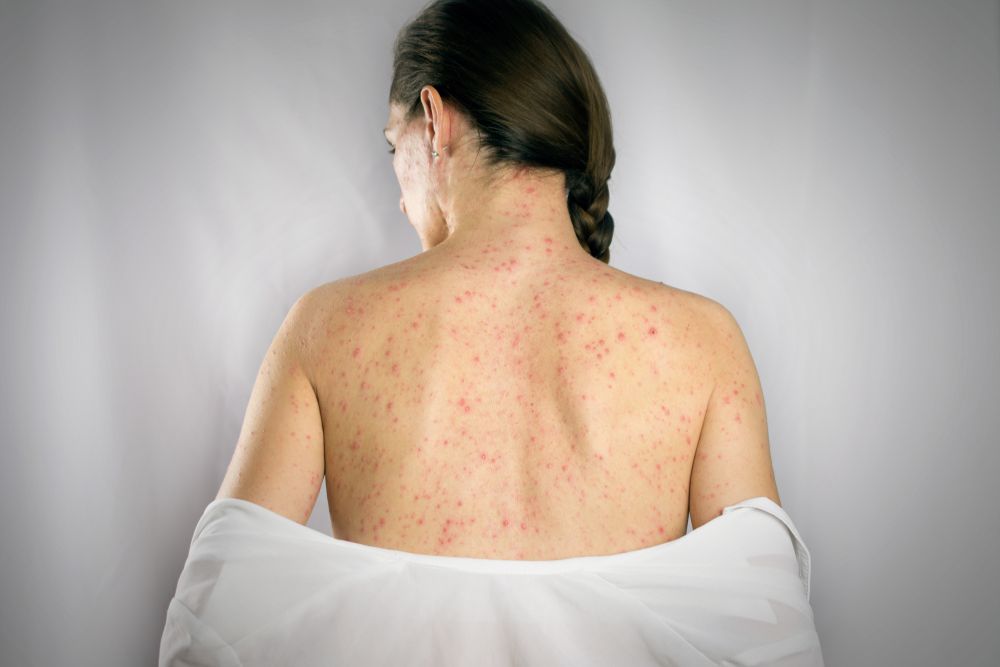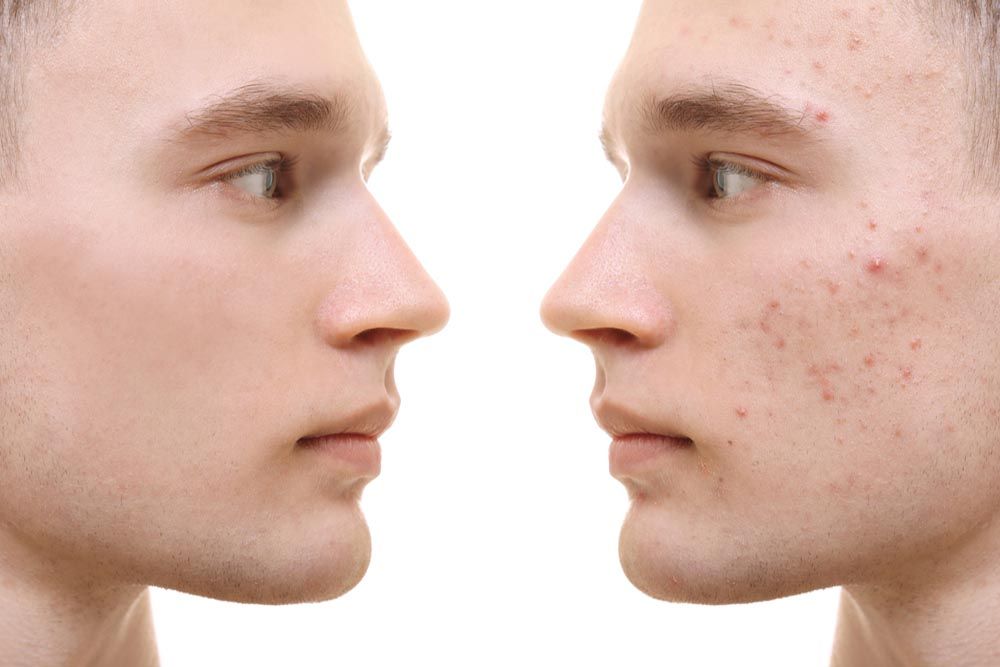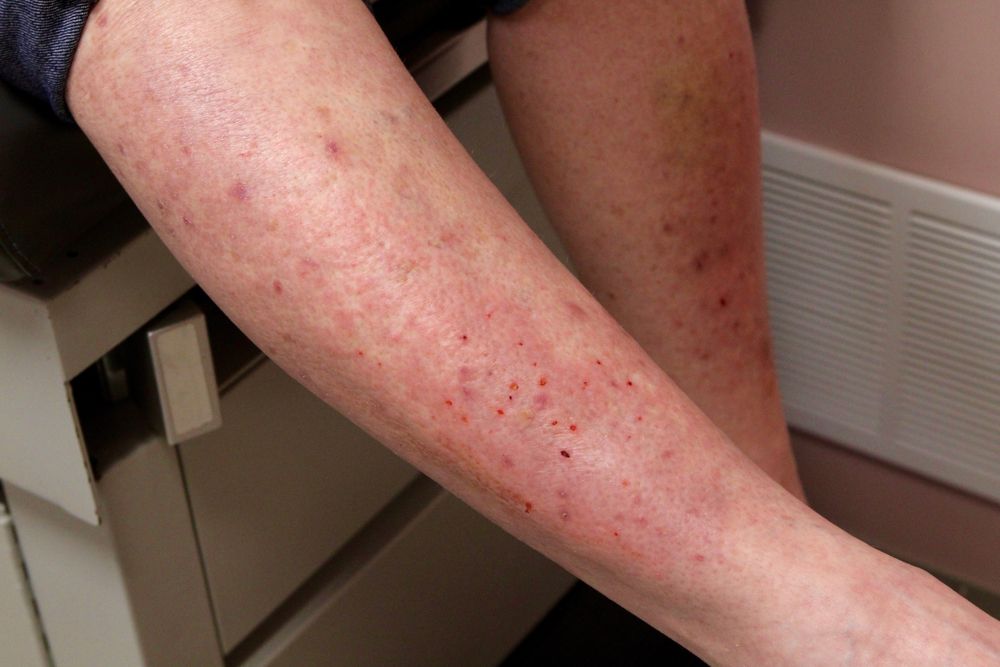Acne is a very common skin condition among teenagers and adults in the United States. It is not just found on the face. It is often on the shoulders, chest, and back. (Learn More)
For many people, back acne seems unsightly, but it can be treated with standard, over-the-counter methods like mild cleansing soaps.
For those who have chronic or severe acne that does not respond to OTC help, working with a dermatologist and using a specific medication can help clear up the problem. (Learn More) Lifestyle changes during prescription treatment can help the problem go away faster too. (Learn More)
What Is Back Acne? Is It Serious?
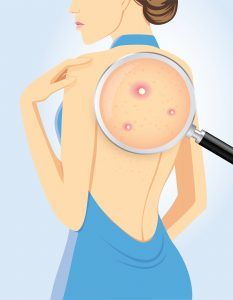
Acne is the most common skin condition in the United States, caused by hair follicles and pores that become clogged with oil and dead skin cells.
Most people are familiar with acne living on the face and forehead, but it can be found on many other areas of the body, including the chest, shoulders, and back.
Acne is common among teenagers due to skin changes associated with hormonal fluctuation, but many adults have acne too.
- Whiteheads, or closed, blocked pores.
- Blackheads, or open, blocked pores.
- Small red, sensitive bumps that may form in clusters, called papules.
- Pimples or pustules, which are papules with pus at the tip.
- Nodules, which are large, solid, and painful lumps just below the surface of the skin.
- Cystic lesions, which are pus-filled, painful lumps below the surface of the skin.
Most people who have acne can use over-the-counter or at-home remedies to manage the skin condition. The best treatment for standard acne is to keep the face clean with gentle cleansers and avoid popping pimples or sore spots, which can increase the risk of a skin infection through bacteria. Some back acne may become so serious that you need to see a doctor for prescription treatment options.
Medical Treatment for Moderate to Severe Back Acne
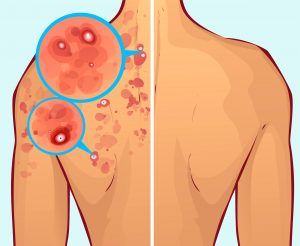
If you have acne on your back that does not go away, becomes painful, or begins to scar, you should see a dermatologist for help. Dermatologists grade acne on a scale from 1 to 4, with Grade 1 being very mild and Grade 4 being severe acne that may require prescription treatment. Your dermatologist will also determine what type of acne is on your back and work with you to manage the condition.
Some milder treatments for back acne include specific soaps to use in the shower. If you have perfumed or scented soaps, get rid of those in favor of less irritating, unscented soaps. You may also wash with:
- Benzoyl peroxide foam wash, which can control back acne when used daily. Leave it on in the shower for two to five minutes and then rinse.
- Retinoid gel, which you can leave on as directed by your doctor.
Prescription acne treatments include options that are applied directly to the skin; systemic options that are usually oral pills; and skin procedures to treat the affected area.
Topical treatments applied to back acne include:
- Retinoids or retinoid-like drugs. Creams, gels, and lotions that come from vitamin A help manage skin outbreaks. These may be tretinoin (brand names: Avita or Retin-A); adapalene (Differin); or tazarotene (Tazorac or Avage).
Typically, these medications are applied three times a week, in the evening, for a week or two as your skin becomes used to the medication. Then, you will apply the ointment daily. These prescriptions keep hair follicles from becoming plugged, so pores remain clear and your skin can heal. - Topical antibiotics. If a bacterium is the cause of acne or ongoing clogged pores, using a topical antibiotic can kill the infection and help redness and spots go away. These prescriptions typically feature benzoyl peroxide, which lowers the risk that bacteria will become resistant to this medication. Then, active ingredients may include clindamycin (Benzaclin, Duac, or Acanya) or erythromycin (Benzamycin).
You may apply an antibiotic in the morning, and a retinoid cream in the evening until back acne clears up. Topical antibiotics alone will not be enough to treat the overall problem of back acne. - Sold as brand name Aczone, this gel is prescribed twice daily for inflammatory acne, including on the back. It is especially effective for adult women who have recurring, problematic acne.
- Salicylic acid and azelaic acid. These types of acid are naturally occurring in some foods, like whole wheat or animal products, and they have antibacterial properties. Used twice per day for four weeks, azelaic acid is very effective at reducing acne, especially when combined with erythromycin. They are also a safe option for women who are breastfeeding or pregnant.
Brand names for azelaic acid include Azelex and Finacea. Studies on salicylic acid show that its effectiveness is more limited, but it works well for some people.
If you have back acne, and your doctor prescribes a topical cream or lotion to manage it, you can ask about lotion applicators or brushes that can help you reach certain areas. These can easily be found online too. Avoid anything that has thick bristles or will scrub your skin, as they can irritate the area more.
Since back acne is harder to reach, creams or lotions may be less effective for severe, recurring acne areas. Your dermatologist may prescribe oral tablets or pills instead, including:
- Oral antibiotics. If back acne is caused by a bacterial infection, you are more likely to receive a prescription for a few days of oral antibiotics, as this can be easier than trying to reach your back with a topical antibiotic cream.
- Combined oral contraceptives. Women may develop acne, including back acne, due to a hormonal imbalance. If back acne is treatment-resistant, taking a low-dose hormonal contraceptive can help to clear the problem. Frequently prescribed brands include Yaz, Ortho Tri-Cyclen, and generic varieties.
- Anti-androgen agents. If a low dose of estrogen does not work or puts the woman at risk for other complications, an anti-androgen pill like spironolactone (Aldactone) may work well instead.
- Available under the brand names Amnesteem, Claravis, and Sotret, this oral pill works well for those whose back acne does not respond to other types of treatment. While it is very effective, the list of side effects is long. It includes serious medical issues like ulcerative colitis, increased risk of depression and suicidal ideation, and severe birth defects. Because there are such serious consequences to this medication, people who take it must participate in the Food and Drug Administration’s approved risk-management program.
If medication fails to reduce or eliminate back acne, or the specific type of acne does not respond to topical or oral medication, your dermatologist may use other approaches to treat your skin, including:
- Photodynamic therapy or laser therapy.
- Chemical peels.
- Extraction of whiteheads and blackheads.
- Steroid injections.
Other Treatment Options to Reduce or Eliminate Back Acne
When you begin treatment for back acne, you can also make some lifestyle changes to manage recurrence or severity of symptoms. These include:
- Using gentle soaps to keep the area clean, and do not scrub areas too hard
- Working with your general practitioner to adjust other prescription medications that may contribute to back acne, if possible
- Adjust your diet to reduce certain foods, like dairy and carbohydrate-rich meals
- Find ways to manage stress, which can cause more frequent outbreaks
- Wear loose-fitting, thinner shirts made from moisture-wicking fabrics
- Wash workout clothes after each use, and do not wear dirty or sweaty clothes
- Shower and change clothes immediately after physical activity or getting home on a hot day
- Get oil-free cleansing wipes for skin if you cannot take care of sweat immediately
- Stop using anything that rubs against your back, like a backpack
- Protect your skin from the sun with sunscreen, or staying indoors until your back acne clears up
For the most part, keeping your skin clean, avoiding harsh soaps and fabrics, and reducing your risk of skin infections will help to prevent back acne.
If you have chronic back acne, find a dermatologist who can help.
References
Acne: Overview. American Academy of Dermatology Association (AADA).
Acne. (December 27, 2018). Mayo Clinic.
Acne. (December 27, 2018). Office of Women’s Health (OWH).
How to Get Rid of Back Acne. (March 28, 2017). Healthline.
Back Acne: How to See Clearer Skin. American Academy of Dermatology Association (AADA).

